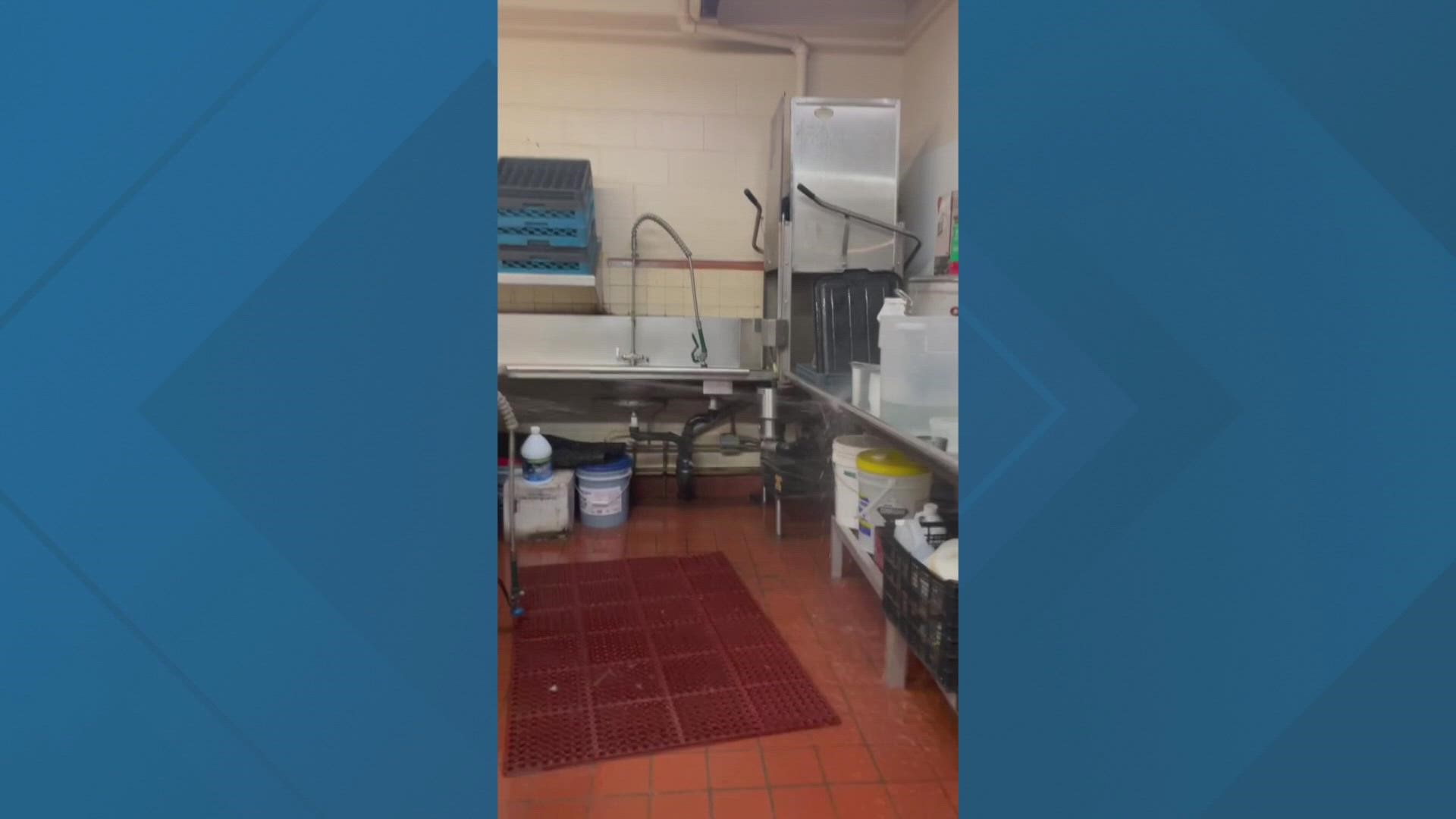PORTLAND, Ore. — Staff at Mirisata, a Sri Lankan restaurant on Southeast Belmont in Portland, arrived to find an unwelcome sight on Saturday: Water spraying out of faucets, overflowing sinks and rushing out onto the kitchen floor.
The restaurant's pipes had burst due to the freezing temperatures on Thursday and Friday, and Mirisata wasn't the only victim. The problem has been widespread in Portland following an ice storm that sent temperatures down to the low 20s.
"We also responded to about 1,000, or at least 1,000, calls for assistance in doing an emergency water shut-offs,” said Felicia Heaton with the Portland Water Bureau.
The calls came from all sorts of places, she said — homes, apartments and businesses. The bureau also saw nearly 20 water main breaks between Thursday and Friday.
"One of those was pretty significant in size," she said. "That was at Southwest First and Arthur, kind of in the downtown area. This one was a 16-inch main. That's a really big pipe. And it broke and the water was gushing enough that it lifted the pavement up."
Rick Graves, public information officer for Portland Fire and Rescue, said his agency responded to 311 water emergency calls since Thursday, 174 of which were calls to address broken and ruptured water pipes or sprinkler heads due to freezing temperatures.
The other 137 calls were also water problems, from residential settings without safety systems in place.
"If this rupture happened to you, it's probably happening somewhere else and somewhere else and somewhere else," he said.
Those burst pipe calls are on top of PF&R's regular emergency calls for fires, motor vehicle collisions, medical situations and other service calls.
"25% of the calls at that time that the Portland Fire Rescue ran on were water emergencies," said Graves. "That is significantly larger than what we are used to seeing."
Graves shared some tips about how homeowners can help out while waiting for emergency responders, including by finding their home's water main shutoff and having a few tools to turn off the water on their own.
"Things that you can have: A bucket to capture your own water. Varying degree and sizes of shut off keys, mechanisms and methods on how to locate the valve box knowledge yourself of where that valve box is," Graves said.
Another trick to prevent burst pipes is to stop them from freezing in the first place by leaving a pencil-width stream on all sinks to keep the water flowing, because it’s harder for water to freeze while it flowing.
"You know, main breaks and frozen pipes aren't picky, so they just happen all over the place," Heaton said. "So we responded to folks all over the city."
Here are some more tips from Graves to prep for the next ice storm:
Exterior help
Know where your city valve box is located so if crews show up and it is buried under snow, they have an easier time in discovery
Mark the location for so it's easy to find upon arrival
Interior Help
Locate the shutoff valve of your residential water supply as it enters the home and familiarize yourself with how these valves function. Handle in line indicates water is flowing, handle across the pipe indicates the valve is closed stopping the water flow.
Have a bucket on hand to help capture water flowing to reduce the water damage to your home or business.
Planning
Meet up with a neighbor and learn the location of these valves at their homes so if either of you are away you can lean on each other in time of crisis. Graves said his neighbor was in California during the storm, so he went to their home and shoveled away snow and ice on their patio drain so the melting water didn't back up and flood their home.
Go to the local hardware store and get a bucket and a shut off key and practice how to properly turn the valve in your valve box to stop water coming in from the street.

